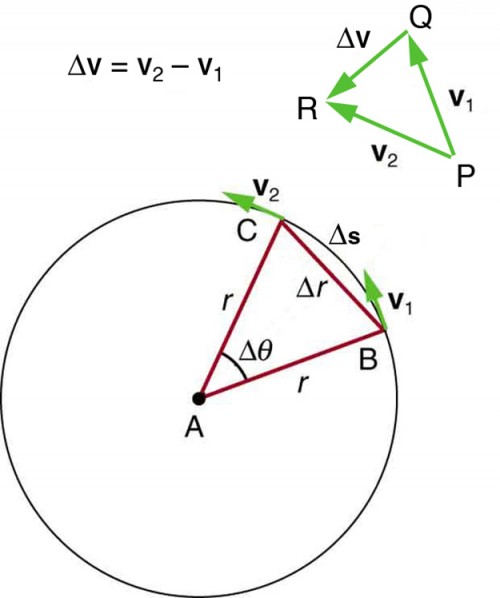An object in circular motion does not have a constant velocity because the direction is always changing. The acceleration of the objects is directed towards the center of the circle. The formula for the centripetal acceleration is a=v^2/R. R is the radius of the circle and v is the constant speed of the circle. As the radius of a circle becomes larger, the centripetal acceleration will decrease. In order to determine the centripetal force of an object we use the formula F=mv^2. Force is equal to Mass x Acceleration. By examining the effects of a radius on an object’s circular path, we performed an experiment on circular motion. In our experiment, centripetal force will be provided by a hanging mass of weight W, M will be the mass of the rubber bung. We found out how the velocity will be affected as we change the radius of an object which is in a circular motion.

The hypothesis is that as the radius of the object in circular motion increases the velocity of the object will increase. The materials we used to complete the experiment are : rubber bung, weight, tube, stopwatch, ruler and string. While doing the experiment we made sure that we stood at a safe distance from the area in which the rubber bung was being spun. To complete the experiment, we at first gathered all the necessary equipment, then we marked points at 20, 40, 60 & 80 and 100 cm. We spun the string with the rubber bung at each length and measured the time it took to go around in a circle 10 times with a stopwatch. I calculated the v^2 by multiplying the acceleration with the radius. Looking from, it is clear to see that there is a linear relationship between radius and velocity. There is a strong positive linear correlation.
Although the time increased as the radius increased the distance traveled increased. We were able to deduce that there is a linear relationship between velocity and radius in circular motion. Even though the magnitude of the velocity stayed the same the direction was changing this led to centripetal acceleration going towards the center of the circle. The radius remained constant for each time rotating the object in circular motion. The mass of the rubber bung and weight stayed the same which made the experiment more accurate, there may have been some errors in conducting the experiment. The ATL skills which we developed while investigating circular motion and circular force are : Research, Thinking and Communication skills.
Comments
Post a Comment